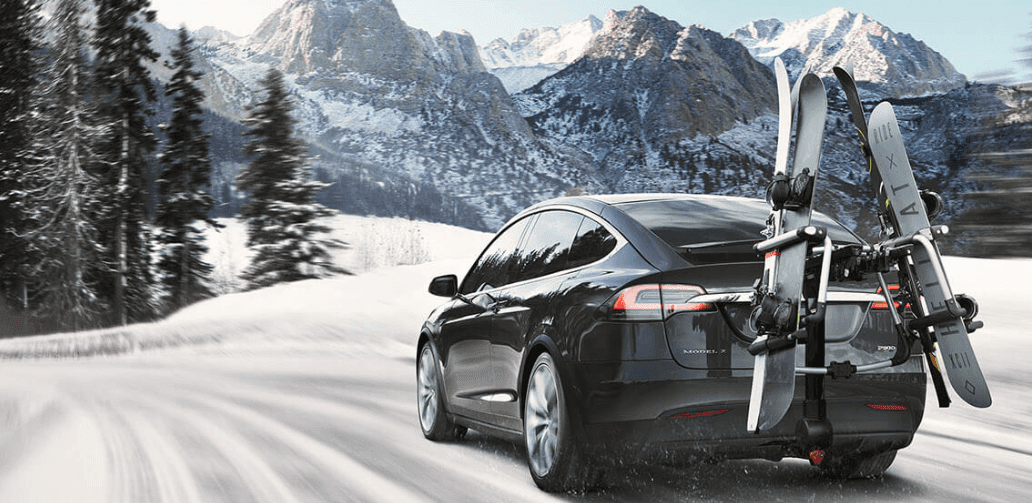After the success of their hugely popular Tesla Model S, Tesla recently began production of the more affordable Model 3. The company kicked off production of the Model 3 with a special handover event to the first 30 pre-order customers. Things always get exciting, around the time of the launch of a new product by impactful companies like Tesla. Take Apple’s launch events for example. Excitement! While the Tesla Model 3 may be new, the EV itself is not a new concept. In fact, if you were to time travel back to the early 1900s and travel to New York, you would probably see several EVs! Out of juice? No worries, you would just need to find one of the city’s comprehensive charging network. It’s surprising that this infrastructure existed anywhere back then. This is especially the case considering today’s dominance of gasoline powered internal combustion engine (ICE) vehicles. So what happened? Why are we only now getting excited again about electric vehicles? Let’s take a little time to explore the answer to this question. Join me on a walkthrough of the history of the electric vehicle.
History of The Electric Vehicle
Beginnings: 1800s
In the early 1800s, carriages, drawn by horses were the predominant means of transportation. However, inventors in Hungary, the Netherlands, the United Kingdom, and the U.S. had already started the creation of the first EVs. Between 1832-1839, a Scottish inventor by the name of Robert Anderson created a rudimentary EV. His invention resembled a carriage. Around 1835, Thomas Davenport, an American, developed what is thought to be the first practical EV. His take on things was in the form of a locomotive. Developments were also taking place in England. During the period, 1840-1847, a patent for the use of rails as conductors was granted in England. His take on things was in the form of a locomotive. During the period, 1840-1847, a patent for the use of rails as conductors was granted in England. Patents similar to the ones filed in England were also filed in the U.S. around the same time period. There are several electric locomotive systems worldwide. This is quite a common technology. This historical walkthrough will focus on consumer level vehicles such as cars and SUVs. In 1851, 2 Frenchmen made significant contributions which aided in the development of rechargeable lead-acid batteries. Physicist Gaston Plante invented the first rechargeable lead-acid storage battery. His compatriot Camille Faure improved the technology around 1881, making it more powerful and delivering a stronger electric current.
Development: Late 1800s/Early 1900s
During the period of the late 1800s/early 1900s, EVs began to proliferate in the U.S. In November of 1881, French inventor Gustave Trouvé demonstrated a working three-wheeled automobile at the International Exhibition of Electricity in Paris France. Circa 1897 marked a significant period for EVs. Electric taxis hit the streets of New York in the U.S. and the Pope Manufacturing Company of Connecticut became the first large-scale American electric automobile manufacturer. Outside of the U.S., the London Electrical Cab Company in England formally began operations around the same time. Meanwhile, in France, during the period 1899 to 1906, EVs were gaining some traction as well. The company Bouquet, Garcin & Schivre (BGS) was responsible for the manufacture of several different types of EVs. Trucks, buses, and limousines were among their offerings. The most impressive fact about BGS was that they managed to produce an EV in 1900 with a range of almost 290 km! This was largely due to the fact that BGS designed their own batteries and were able to tailor their battery systems to their EVs. The result was an astonishingly impressive range. With all of the positive activity surrounding EVs, at the time, Thomas Edison took up the task of developing batteries intended for use with EVs. He believed that EVs would be mainstream indefinitely and was inspired to work on the alkaline batteries because of this. However, this was not to be.
Decline of Electric Vehicles
Henry Ford, the founder of the Ford Motor Company, released one of the first mass-produced vehicles, The Ford Model T around 1908. This was a gasoline powered ICE vhicle. The release of the Model T created the spark for the first decline of electric vehicles. Perhaps what was the nail in the coffin for the EV at the time was the introduction of the electric starting motor for gasoline powered vehicles. Around 1912, Charles Kettering introduced the first practical electric starting motor. This coupled with mass produced gasoline powered vehicles dealt a heavy blow to the EV industry. By 1920, the EV was no longer as viable as it once was. The range of gasoline powered vehicles was longer, and EVs at the time lacked horsepower. Additionally, the network of gas stations was developed and expanded in many locations across the globe. This was facilitated by the increasing ease with which crude oil could be obtained for the production of gasoline.
Renewed Interest In EVs
Economic Strain
Fast-forward to 1966 and there was very little EV activity during this time period. However, in the U.S., Congress showed signs of interest in EVs. During this year bills which suggested that EVs be used as a means of reducing pollution were introduced. A poll by Gallup even indicated that 33 million Americans were interested in EVs. Following this U.S. Congress activity and the poll, was the 1973 oil crisis spurred on by the Arab-Israeli, Yom Kippur War between Egypt and Syria, and Israel. Egypt and Syria imposed an embargo on the U.S. from 1973-1974 due to the U.S. decision to support Israel during the war. This embargo put significant pressure on the global economy. After the repercussions of the 1973 oil crisis, there was renewed interest in renewable sources of energy as well as in EVs.
Development of the Hybrid-Electric Vehicle
In 1972, Victor Wouk, who is considered to be the “Godfather of the hybrid”, created a modern hybrid, gasoline-electric vehicle. This project was sponsored by General Motors (G.M.). They provided him with a 1972 Buick Skylark to complete the project. The project was a part of the 1970 U.S. Federal Clean Car Incentive Program. A hybrid, gasoline-electric vehicle is one which makes use of both an electric motor and a gasoline engine. It uses less gasoline than a vehicle powered solely by an internal combustion engine and is more environmentally friendly than a gasoline powered vehicle. Ferdinand Porsche, the founder of the Porsche car company, devloped the first hybrid gasoline-electric vehicle all the way back in 1901. This vehicle is pictured below.
A New Era
The U.S. Federal Clean Car Incentive Program was unfortunately axed in 1976, but several EV projects followed. Below is a recap of the major EV projects from 1976 up until today in 2017.
Signs of Change: 1976-2000
1976: U.S. Congress passes the Electric and Hybrid Vehicle Research, Development, and Demonstration Act. This law was introduced to push the development of EVs and hybrid gas-electric vehicles.1997: Toyota unveils the Toyota Prius. This vehicle has been commercially successful since its release.1997-2000: Several large car manufacturers release EVs. GM releases their EV1 and other offerings are released by Ford, Toyota, and Nissan. These vehicles are provided on a leased basis only however and are discontinued in the early 2000s.
Things Pick Up Quickly: 2006-2017
2006: Tesla Motors unveils the Tesla Roadster. This vehicle is an impressive sports car. It is released in 2008 with a whopping price tag of U.S. $98 950. It is based on a Lotus chassis.2008: The Israeli government puts an initiative in place to promote the use of EVs. An extensive charging network is proposed and the import of electric cars from Renault are scheduled.2008: Skyrocketing gas prices push the focus of the automotive industry to more fuel-efficient vehicles and there is even more interest created in EVs.2009: In the U.S. $2 billion is allocated for the development of EV related technology. The Department of Energy allocates $400 million to fund the infrastructure needed to support EVs.2009: British Prime Minister Gordon Brown makes a statement, proclaiming a £2,000 subsidy to persons purchasing EVs.2009: Back in the U.S., Ford, Nissan, and Tesla Motors are awarded $8 billion to support the development of fuel-efficient vehicles.2009: The Nissan Leaf is unveiled. This EV has been commercially successful since its release.2011: The Chevrolet Volt is introduced. This is a plug-in hybrid with an all-electric range of 35 miles.2012: The Tesla Model S is introduced. This is an all-electric luxury vehicle developed from the ground-up by Tesla.2013: The Tesla Model X is introduced. This is the first all-electric SUV.2013: BMW releases the i3 all-electric vehicle. It does not have the range of the Tesla line but is suited for short journeys in the city.2014: BMW releases the i8 hybrid plug-in electric sports car.2017: Chevrolet releases the Bolt. A hatchback with a range rivaling that of the Tesla line.2017: Tesla begins production of the Model 3 and delivers its first vehicles to preorder customers. This is Tesla’s first affordable electric vehicle.
Final Thoughts
Electric vehicles are environmentally friendly and very quiet. They also produce lots of torque at low RPMs. This means that EVs typically don’t need a transmission which is one less costly component. RPMs: Revolutions per minute Torque: Rotational force On the other hand,gasoline powered ICE vehicles, have a longer range than many EVs. Batteries can also drive up the cost of an EV which means that EVs tended to be more expensive than an ICE vehicle (at least prior to vehicles like the Nissan Leaf). With that being said, EV technology is clearly improving. Continual improvements to charging networks will be needed before the technology is mainstream. More efforts like the Federation Internationale de l’Automobile (FIA) Formula E racing series will be needed to generate widespread public approval of EVs. I encourage you to check out some action from this year’s Formula E championship below to get an idea of the capability of an EV.
The above article may contain affiliate links which help support Guiding Tech. However, it does not affect our editorial integrity. The content remains unbiased and authentic.



















